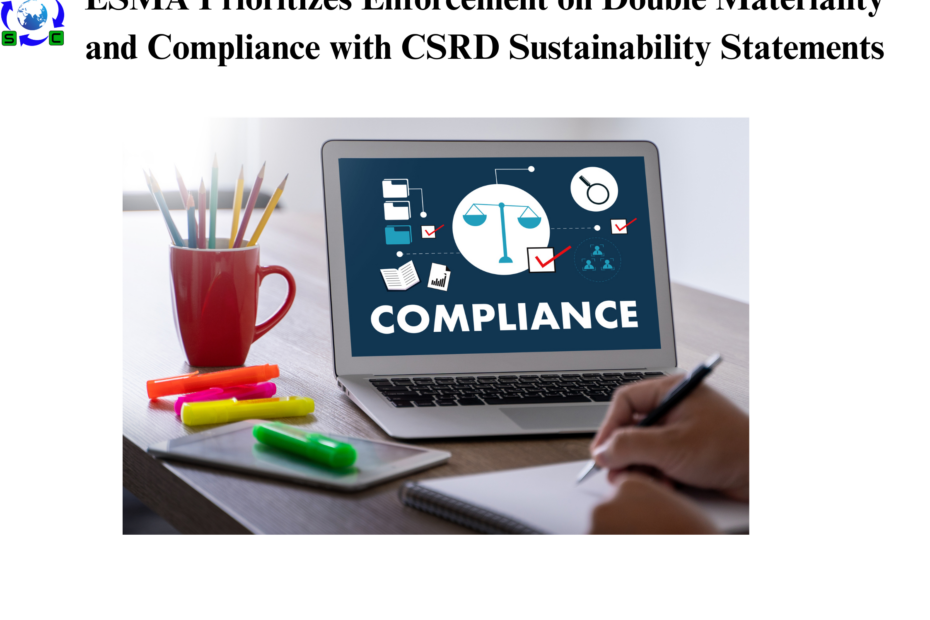 The annual European Common Enforcement Priorities (ECEP) Statement for corporate reporting, which was released by the European Securities and Markets Authority (ESMA), the EU’s market watchdog, outlined the main concerns surrounding the new Corporate Sustainability Reporting Directive (CSRD) as areas that ESMA and national European enforcers will be closely monitoring over the course of the upcoming year.
The annual European Common Enforcement Priorities (ECEP) Statement for corporate reporting, which was released by the European Securities and Markets Authority (ESMA), the EU’s market watchdog, outlined the main concerns surrounding the new Corporate Sustainability Reporting Directive (CSRD) as areas that ESMA and national European enforcers will be closely monitoring over the course of the upcoming year.
The regulator identified the breadth and form of sustainability statements, the implementation of EU Taxonomy reporting templates, and double materiality evaluations as specific enforcement objectives pertaining to sustainability reporting.
The EU’s sustainability reporting structure has undergone a big overhaul with the CSRD, which requires over 50,000 enterprises to give sustainability disclosures, up from about 12,000 previously. The CSRD, which is based on the new underlying European Sustainability Reporting norms (ESRS), adds additional specific reporting requirements on how businesses affect sustainable risk, human rights, and social norms. For major public-interest firms with more than 500 workers, the CSRD went into force at the beginning of 2024. The first reports were released in 2025, when enterprises with more than 250 employees or €50 million in revenue followed, and listed SMEs a year later.
The adoption of a “double materiality” approach to sustainability reporting, which involves reporting on an organization’s environmental and social impacts in addition to the risks and effects of sustainability concerns on the organization, is one of the main mandates brought about by the CSRD.
ESMA has identified two key areas of focus: transparency regarding how companies identify and prioritize affected stakeholders for engagement under the materiality assessment process, and detailed disclosures regarding the assessment process, “including through providing sufficient information on the activities, business relationships, geographies, and stakeholders considered.”
The new priorities come after ESMA made a public statement in July urging businesses to get ready for the CSRD requirements. The statement called on issuers to “carefully set up their systems of data collection and analysis, as well as internal controls” to comply with the ESRS’ detailed reporting requirements and to perform double materiality assessments.
The importance of connectivity between the sustainability statement and financial statements is highlighted by ESMA under its enforcement priorities regarding the scope and structure of the sustainability statement. These issues include reiterating that the sustainability statement and financial statements are based on the same reporting entity and that references to the corresponding financial statement information are included in “monetary amounts or other quantitative information included in the sustainability statement and that are also presented in the financial statements.” In addition, ESMA pointed out that the sustainability statement must include information about the effects, risks, and opportunities associated with a company’s value chain. Although the ESRS provides transitional reliefs for value chain information during the first three years of reporting, issuers must still explain how they obtained the information and how they intend to do so in the future.
The EU Taxonomy is a classification scheme that makes it possible to group economic activities that significantly contribute to at least one of the six environmental goals without seriously impairing the other goals. Regarding taxonomy-related disclosures, ESMA emphasizes concerns when actions are in line with multiple environmental goals of the taxonomy and encourages issuers to follow the templates outlined by the taxonomy law.
Sustainability reporting specialists observed that when EMSA’s enforcement goals were announced, the agency seems to be adopting a more stringent stance toward compliance than what European lawmakers had recommended.








 Authorised IMDS & CDX Training & Consulting partner for
Authorised IMDS & CDX Training & Consulting partner for





